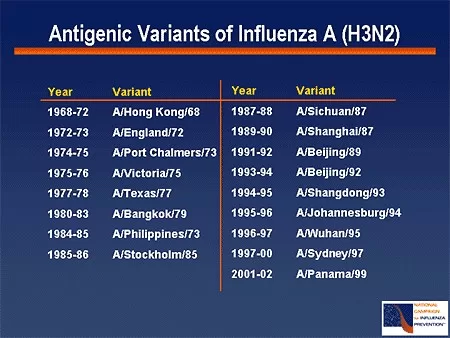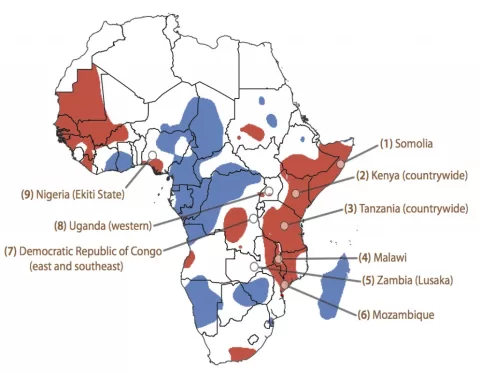Variant influenza is a growing concern as the Centers for Disease Control and Prevention (CDC) reports new cases, including two recent infections in Ohio and Pennsylvania. These cases, associated with the H1N1 influenza variant and H1N2 influenza variant, highlight the ongoing threat of swine flu, particularly among individuals exposed to pigs. The CDC’s weekly influenza report reveals that there have been a total of seven reported cases of variant influenza this flu season, raising awareness about the importance of monitoring human infections with swine flu. Both patients had preexisting health issues and have since recovered, but their cases serve as a reminder of the risks associated with close contact with swine. As agricultural events become more common, understanding variant influenza and its implications becomes crucial for public health.
Influenza variants, particularly those derived from swine, pose significant health risks and warrant close attention. Often referred to as swine flu, these infections can occur through direct contact with infected pigs or contaminated environments. The recent occurrences of the H1N1 and H1N2 strains reflect the dynamic nature of these viruses and their potential to infect humans. The CDC continues to monitor these situations closely, particularly during agricultural fairs when exposure is most likely. Public awareness and preventive measures are essential to mitigate the spread of these variant strains.
Understanding Variant Influenza: Key Variants Explained
Variant influenza refers to strains of the influenza virus that typically circulate in animals but occasionally infect humans. Among these variants, the H1N1 influenza variant and H1N2 influenza variant are noteworthy due to their links to swine flu. The H1N1v strain, commonly associated with swine flu outbreaks, has been reported in multiple cases, particularly among individuals who have had close contact with pigs. This connection highlights the importance of monitoring both animal and human health, especially in agricultural settings where such interactions are commonplace.
The Centers for Disease Control and Prevention (CDC) closely tracks these variants to assess their impact on public health. The latest CDC influenza report indicates a total of seven reported cases of variant influenza this season, with a notable presence of the H1N2v variant. This data is crucial for understanding the transmission dynamics of these viruses and implementing appropriate health measures to prevent further human infections, particularly in high-risk populations.
Frequently Asked Questions
What is the variant H1N1 influenza variant and how does it differ from regular H1N1?
The variant H1N1 influenza variant (H1N1v) is a strain of the H1N1 virus that is primarily transmitted from pigs to humans. Unlike the regular H1N1 virus that circulates among people, H1N1v is linked to direct contact with infected swine, often occurring during agricultural events. The CDC monitors H1N1v cases closely to prevent outbreaks.
How are human infections with swine flu caused by the H1N2 influenza variant?
Human infections with the H1N2 influenza variant (H1N2v) typically occur after direct exposure to infected pigs or their environments. The CDC reports that individuals working in agriculture or attending fairs where pigs are present are at higher risk. Monitoring and reporting are essential to manage these sporadic cases and prevent transmission.
What does the latest CDC influenza report say about variant influenza cases?
The latest CDC influenza report indicates that there have been 7 cases of variant influenza reported during the 2024-25 flu season in the United States. This includes 4 cases of H1N2v, 2 cases of H3N2v, and 1 case of H1N1v. The report highlights the importance of tracking these cases, especially among those who have close contact with pigs.
Are there any human-to-human transmission risks associated with variant influenza?
Currently, there have been no identified cases of human-to-human transmission associated with variant influenza, including H1N1v and H1N2v. The CDC states that sporadic human infections typically arise from direct contact with pigs, and no symptoms have been reported in close contacts of affected individuals.
What precautions should be taken to prevent variant influenza infections?
To prevent variant influenza infections, it is crucial for individuals who work with pigs or attend agricultural events to practice good hygiene, such as washing hands frequently and avoiding close contact with sick animals. The CDC recommends vaccination and monitoring for symptoms in individuals who have been exposed to pigs, especially during the summer months when swine flu cases are more common.
| Key Points |
|---|
| Two new cases of variant influenza reported by the CDC, one in Ohio and one in Pennsylvania. |
| Both patients had contact with pigs and have recovered after hospitalization. |
| Ohio patient infected with variant H1N1 (H1N1v) at an agricultural event. |
| Pennsylvania patient infected with variant H1N2 (H1N2v) due to occupational exposure. |
| 7 cases of variant influenza reported in the 2024-25 flu season: 4 H1N2v, 2 H3N2v, 1 H1N1v. |
| No symptoms reported in contacts of the patients and no human-to-human transmission identified. |
| Sporadic infections occur mostly among those in contact with pigs, especially during summer agricultural fairs. |
Summary
Variant influenza remains a significant concern as shown by the recent CDC report of two new cases in Ohio and Pennsylvania. These cases highlight the ongoing risk associated with exposure to swine, particularly during agricultural events. Public awareness and monitoring are crucial to prevent further spread of variant influenza.
The content provided on this blog (e.g., symptom descriptions, health tips, or general advice) is for informational purposes only and is not a substitute for professional medical advice, diagnosis, or treatment. Always seek the guidance of your physician or other qualified healthcare provider with any questions you may have regarding a medical condition. Never disregard professional medical advice or delay seeking it because of something you have read on this website. If you believe you may have a medical emergency, call your doctor or emergency services immediately. Reliance on any information provided by this blog is solely at your own risk.








